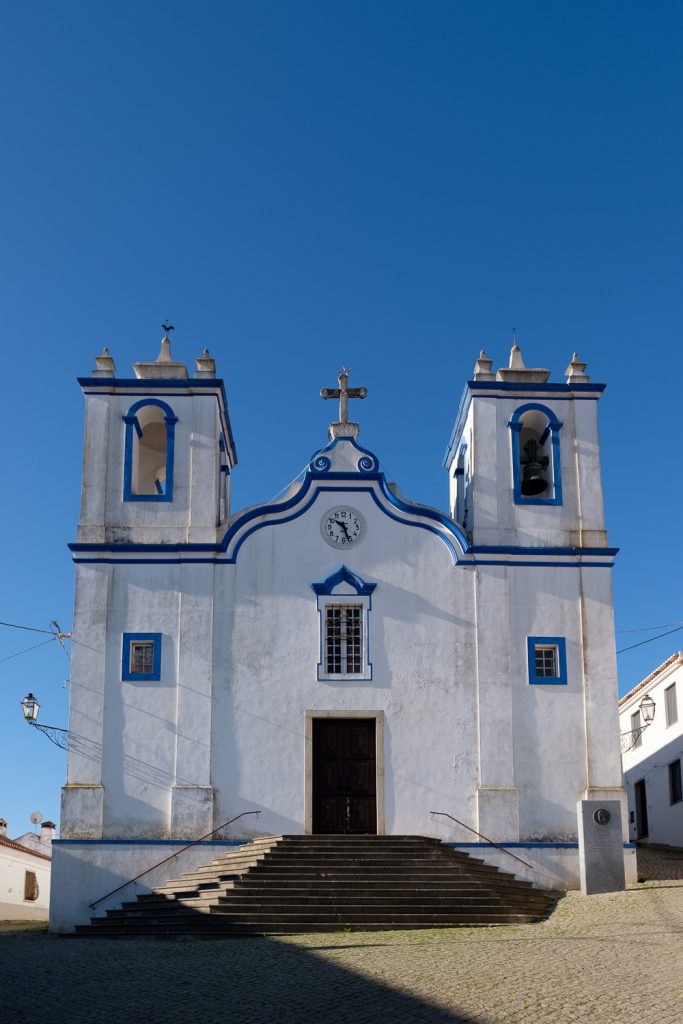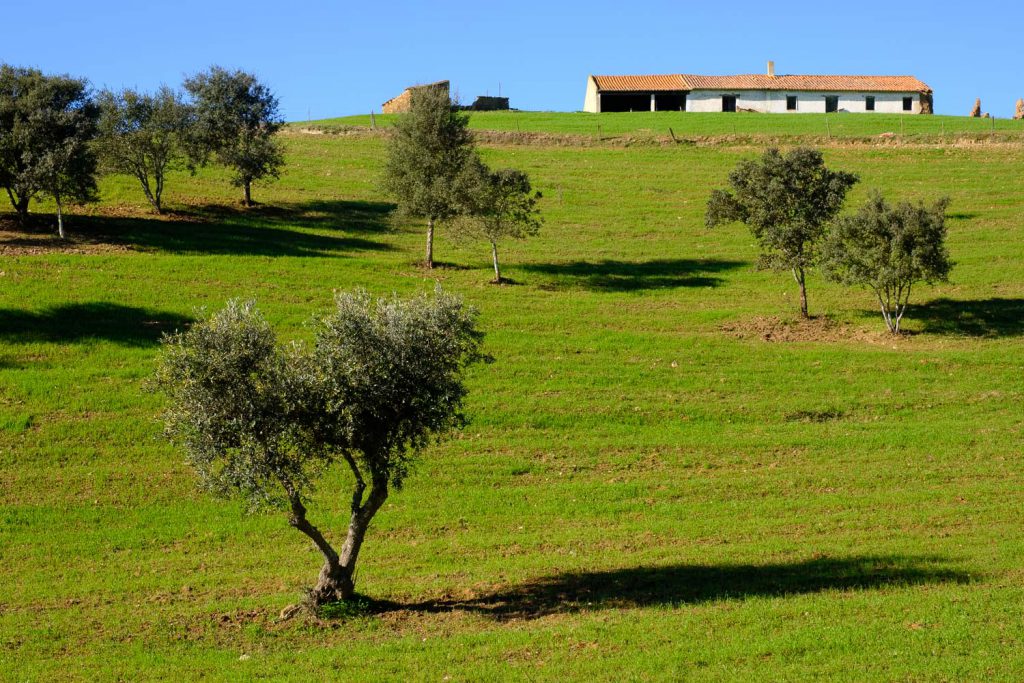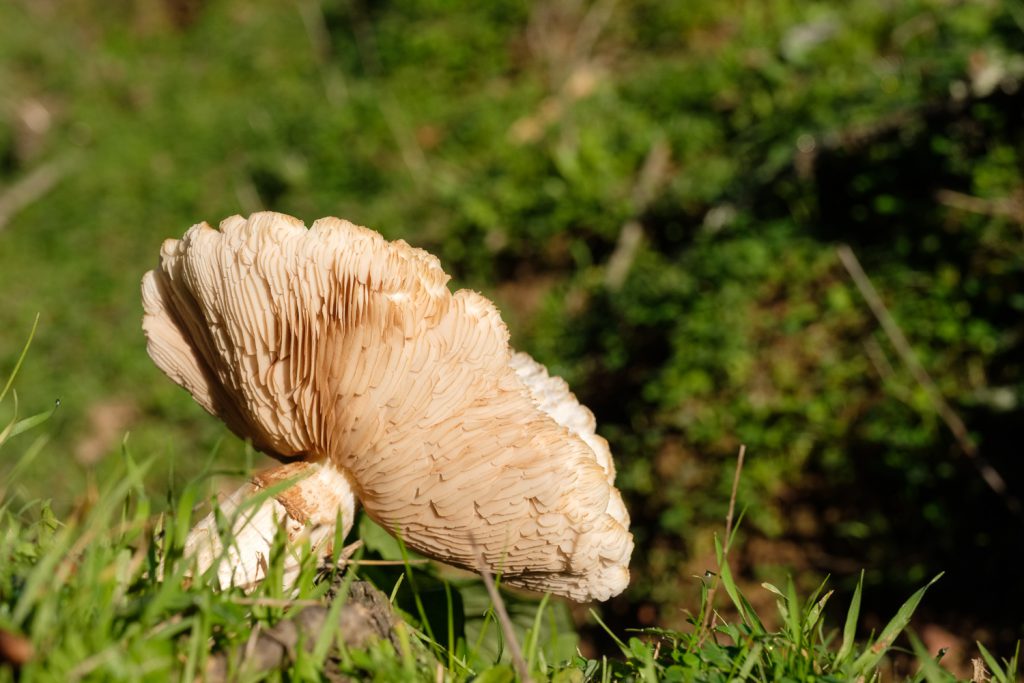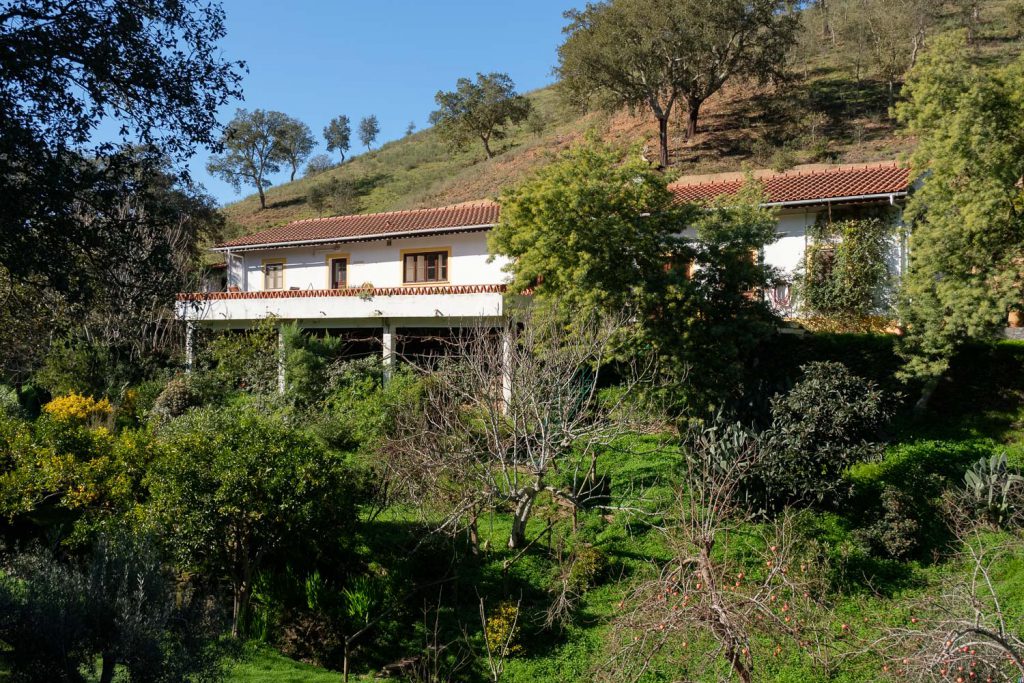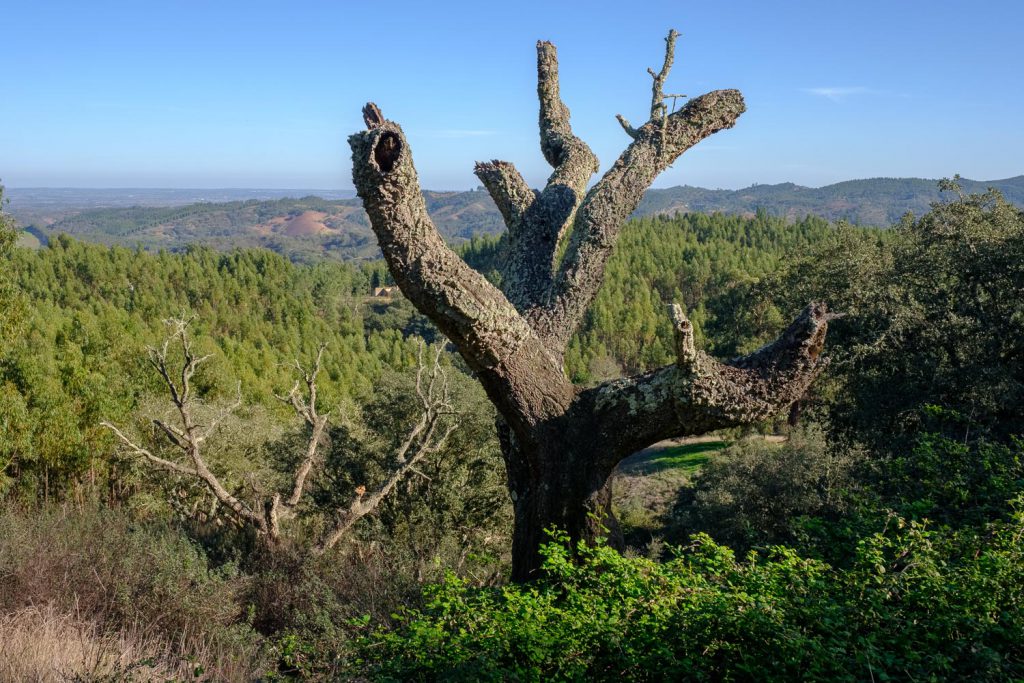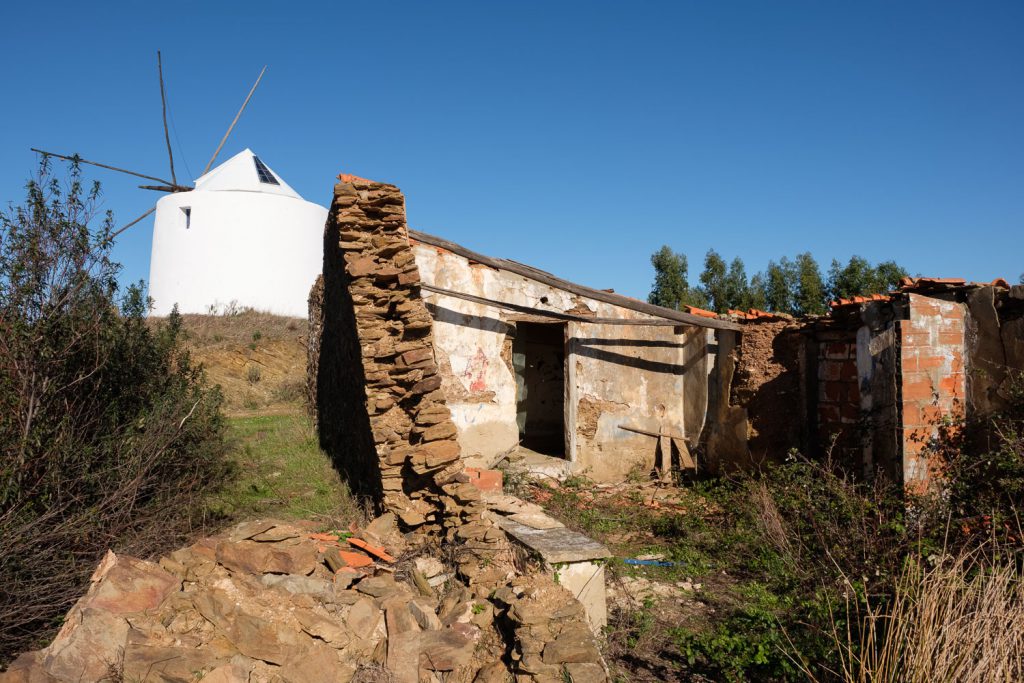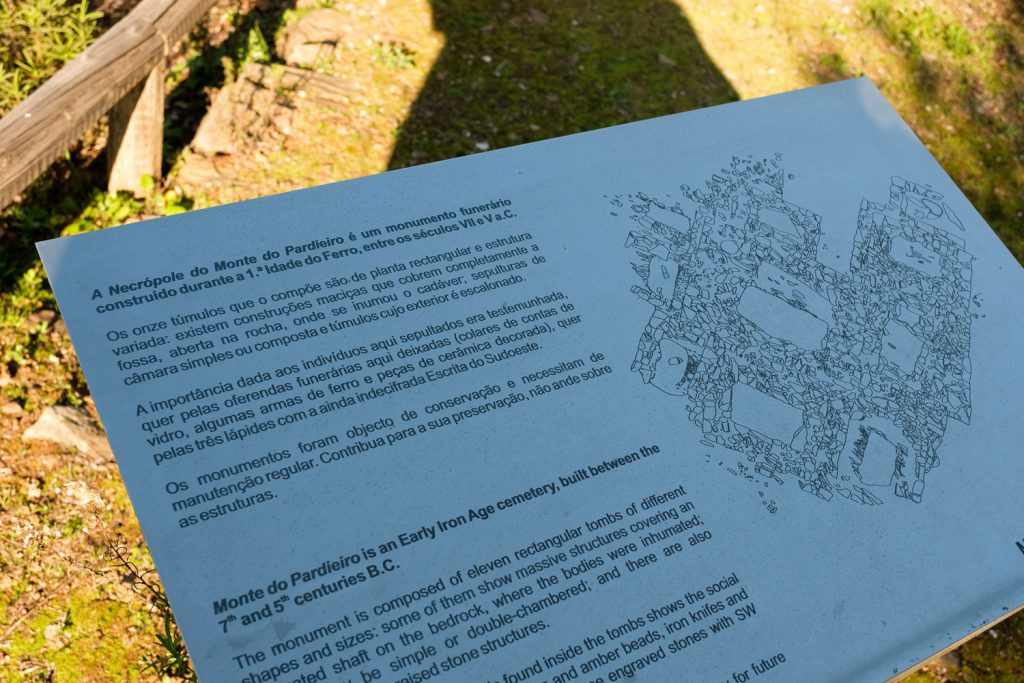Today I want to share another trek I did recently along the Rota Vicentina, a network of 750 km of walking trails in the southwest of Portugal. This time around, near the end of the year, my wife and I walked the 12.5 km of the São Martinho das Amoreiras circular pedestrian route, which is one of the recent additions to the vast number of trails. Like the one described in the previous blog post (Nossa Senhora das Neves), this one is also located in the interior of Odemira municipality. Although they share some common traits – the typical hilly and green rural landscape, with scattered farmhouses – the Amoreiras trail allows visitors to see some of the best products of the region, such as bread, honey, arbutus, and olive oil.
This is a scarcely populated parish (around 1,000 inhabitants), so tranquility is never far away. Still, you will see resilient people, mostly old, that keep alive the traditional ways of living, working in forestry, farming, and livestock. More recently, rural tourism/guest houses have opened, managed by younger people, offering visitors with the possibility of experiencing the region, offering a combination of activities, such as horse riding, star gazing, and, of course, trekking.
The trail starts in the village, and is easy to follow, thanks to the various signposts. Near the beginning, you can admire the main church in São Martinho, built in the 18th century, built under the auspice of the Order of Santiago de Espada. . Walking along the narrow streets surrounded by the typical low and white washed houses is a nice way to start the trek. After leaving São Martinho, the path quickly follows rural dirt roads and ways . There are numerous small farms with grazing animals and fruit orchards, limited by stone walls and creeks. Several of the older farmhouses have been abandoned and are in ruins, but the fields are still tendered to. Depending on the season, you will be able to see many birds, including a very special bird of prey: the Bonelli’s eagle. There are plenty of trees also, with relevance to old specimens of pines, cork oaks, cedars, and eucalyptus.
For us, there were several highlights on the trail, such as the windmills on the top of the highest hills; these afford magnificent panoramic views of the landscape. They are also good choices for a picnic lunch stop. It is wonderful to spend the day walking leisurely along this trail, winding up and down the green hills, surrounded by nature and tranquility. It seems unreal that the busier coastal area is less than 1-hour drive from here. These interior routes allow the visitors to get in touch with a way of living and cultural traditions that are increasingly rare. They offer a different perspective about the region, where communities are more isolated; the economic activities are a complement to the coastal ones, where fishing (and tourism) prevails. People are friendly and easy going, with the local cafés and public gardens serving as meeting points to warm up under the winter sun.
Human occupation in the area dates back to pre-historic times; this is witnessed by the nearby prehistoric Pardieiro Necropolis, a funerary structure that is 2,500 years old (Iron Age). The site holds several tombs, and some stone slabs were recovered, bearing samples of the first form of alphabetic writing on the Iberian Peninsula.
At the end of the day, if you are driving back towards Odemira, along the twisting N123 road, you will cross several other small and picturesque villages and farms dotting the landscape. Make sure to stop along the way to make a few more photos. This was another great trek in the interior region of Odemira, highly recommended. The link is provided below, for all the necessary details. Needless to say, I took a lot of photos along the trail, a selection of which I am showing below.
https://rotavicentina.com/en/trilhos/s-martinho-das-amoreiras/
